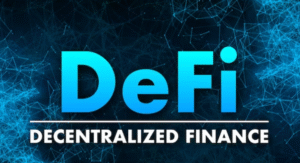$ETH
#Ethereum #ETH #cryptocurrency #investment #blockchain #layer2 #DeFi #cryptoanalysis #marketanalysis #trading #digitalassets #tokenomics
In the ever-evolving landscape of cryptocurrency, Ethereum (ETH) stands as a foundational blockchain that has facilitated the development of decentralized applications and the creation of numerous tokens. However, recent market analysis indicates that the very innovations that contributed to Ethereum’s significance in the digital asset world might also be contributing to its decreased appeal as an investment vehicle. The proliferation of tokens and the establishment of layer-2 networks, aiming to address Ethereum’s scalability and transaction speed issues, have inadvertently led to concerns about ether’s performance.
Market analysts point out that the endless creation of new tokens on the Ethereum platform, along with the emergence of layer-2 solutions like Polygon and Optimism, intended to enhance Ethereum’s scalability and efficiency, might be diluting ether’s value. This development has led to a fragmented ecosystem where the value that could potentially accrue to ETH is now spread across a myriad of tokens and platforms. While these layer-2 networks are crucial for Ethereum’s long-term sustainability and usability, they could also be siphoning attention and investment away from ether itself.
Furthermore, the DeFi (decentralized finance) boom, largely facilitated by Ethereum, has introduced a vast number of tokens and platforms into the market. This expansion has been a double-edged sword. On one hand, it showcases Ethereum’s capacity to support a broad range of applications and financial products. On the other, it increases the complexity and competition within the ecosystem, possibly undermining ether’s unique selling proposition. The concern among analysts is that as more specialized platforms gain traction, they might not only overshadow Ethereum but also make ETH less attractive to both new and seasoned investors.
In conclusion, while Ethereum remains a critical and pioneering blockchain platform, its role as a leading investment vehicle is under scrutiny. The relentless innovation and expansion within the Ethereum ecosystem, although impressive, may be contributing to its underperformance as an investment compared to other cryptocurrencies. Investors and enthusiasts are now faced with evaluating Ethereum’s potential not just on the basis of its technological advancements but also on its ability to retain and enhance its value amidst an increasingly crowded and competitive digital asset market. This situation poses a challenging question for the Ethereum community and potential investors: how can Ethereum adapt and evolve to maintain its relevance and appeal as an investment in the fast-paced and ever-changing cryptocurrency landscape?











Comments are closed.